
|
| Accept Cookies | Customize | Refuse Cookies |
Stefano Banda www.juzaphoto.com/p/StefanoBanda  |
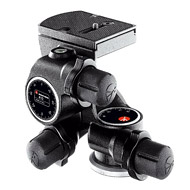 | Manfrotto 410 Pros: Stable, precise in movement, well built, wide availability of spare parts in case of failure Cons: Heavy, quite bulky, non-standard "proprietary" binding, not exactly cheap Opinion: It's my first rack head and I immediately felt good. It is stable even with fairly long and heavy lenses (in my case for a total of about 4 kg) provided of course that it is mounted on a suitable tripod, otherwise its precision of movements is nullified. The construction is solid, and it is pleasing to see that Manfrotto provides almost every spare part (knobs, worm screws, etc.) in case of breakdowns or breakdowns. It must be said that the plate supplied with the head sometimes locks a little too solidly and is very hard to unlock but with another, always original, which I later purchased separately the problem does not exist. It must be said that if you want to put the camera vertically you lose a bit of stability and you are limited in movement, so it is almost essential to buy the special "L" plate, which solves every problem but which obviously adds weight (and cost) to the whole. sent on August 30, 2024 |
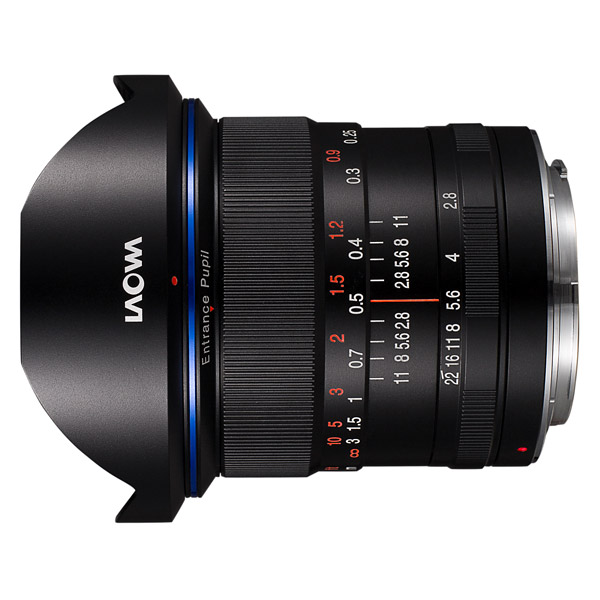 | Venus Laowa 12mm f/2.8 Zero-D Pros: sharp in the center practically always, robust construction, no distortion, flare resistance, in the Pentax version it transmits exif data Cons: lens hood without locking, expensive filters (100 mm plate), full-aperture vignette, not exactly popular price, not tropicalized Opinion: I bought it last winter with black-friday because I wanted a lens for panoramas, astrophotography or special shots, and I must say I made a good choice. The optics are immediately good. It is of robust construction and you can already see it from the weight that is not exactly "feather", even if the dimensions are all in all small taking into account its angle of view. The Pentax 15-30mm f/2.8 for example is huge in comparison and weighs almost twice as much. It is equipped with its lens hood, which works well but does not have a click that locks it in place once mounted, and although it is well frictioned it can happen to move it accidentally, consequently having the corners of the frame dark is a moment. On the other hand, the front metal cap is of excellent workmanship and remains firmly in place. The optical qualities pleasantly surprised me. The sharpness is very good in the center at practically every aperture, while at the edges at full aperture it is less so, but I think it is quite normal with such an angle of view (I use it on full-frame). Diaphragm the situation improves a lot and the edges are well defined already at f/5.6. Beyond f/11 you begin to notice a slight drop in sharpness, but already at this aperture you have a huge depth of field and it is useless to close it any further. At f/2.8 there is also an evident vignetting, which disappears already at f/4 and in any case can be corrected in PP without difficulty. The lens lives up to its "Zero-D" designation, as distortion is imperceptible. The resistance to flare is also very good, there is only some reflection at full aperture with the light source inside the frame, but just close one stop and everything is solved. My version for Pentax seamlessly transmits exif data to the camera when the aperture ring is on the "A" position. In this regard, I point out that the "A" position is exactly like all the others, that is, it does not have a lock/unlock button to use the ring in manual. I don't consider it a defect, more than anything else it is a detail to keep in mind. The aperture clicks are well defined but in manual you can only select the integer values, the intermediate ones (F/3.5, f/6.3 etc.) are only available through the camera menu. The focus ring is also very pleasant to use, well frictioned but not hard, of which I appreciated the very particular calibration, that is, almost all the rotation to focus with great precision from the minimum distance (18 cm) to about three meters and the rest to get to infinity. The price is quite high and in my opinion a bit exaggerated, and maybe given the cost it could have been tropicalized, but so far this lens has given me great satisfaction and is making me tempted to sell the Pentax 15-30mm, which I will probably keep only because being a zoom it is more versatile, and a round of applause to Venus Laowa who is one of the very rare manufacturers that supplies some of its lenses (not all, alas) with Pentax mount. sent on May 23, 2024 |
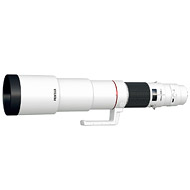 | Pentax DA 560mm f/5.6 ED Pros: Remarkable sharpness, tropicalized, robust construction, functional carrying bag Cons: Obviously the weight and even more the size, autofocus not very fast, bracket for the tripod a bit short, very (too) flashy Opinion: It went out of production in 2020 so I never thought I'd find a used one, especially in like-new condition, so I consider myself very, very lucky. That said, you can't review it like any Pentax lens, given its out-of-the-ordinary features. I'll start with the obvious; It's heavy and bulky. With the K3-III you get to 4 kg and a little more with the K1, so the swing is definitely challenging. Mind you, for the lens that it is (almost a 600 mm, let's not forget) it is not a boulder, but if not unthinkable it is at least complicated to use it handheld for more than five minutes in a row unless you are Schwarzenegger in the Commando version, but even so there is no stabilized sensor that holds and it is almost mandatory to set very fast shutter speeds, Let's say from 1/2000 upwards, otherwise photos with a high risk of blur, also because, in addition to the weight, you have to deal with the dimensions really out of scale, especially with the lens hood (built-in) in the working position. Its most natural use is the "static" one, such as in a shed or on the side of the track of a racetrack, for example, therefore with a tripod or monopod. In this regard, I noticed that the relative bracket, although very sturdy, is a bit short and the camera-lens assembly is not always well balanced despite the fact that there are three threaded holes along the entire bracket. On the other hand, nothing to say about the optical qualities. Sharpness and microcontrast are also very good at full aperture and it improves further, albeit slightly, at f/8. Aberrations are very well contained and, if present, are limited to the most extreme contrasts and in any case can be easily eliminated. A truly remarkable achievement for such a lens, and in full respect of Pentax tradition. The autofocus is not bad and is more than sufficient in most cases, the limiter then helps to speed up the whole thing a bit, but it is clear that the latest Pentax products such as the 70-200 or the 150-450, being more recent projects of at least ten years, are something else. The performance remains very good even in combination with the Pentax 1.4x teleconverter, it loses something in sharpness but the autofocus remains precise as long as you scrupulously do the in-camera calibration with the multiplier engaged, moreover the handheld panning is even more difficult. Finally, I would like to highlight its white color, which is the only one available. While it helps keep temperatures down under the sun, it also makes it all too flashy. If you do photo hunting in a stakeout, it is better to cover it with "camouflage" neoprene, you will undoubtedly be more discreet and less conspicuous, avoiding alarming the animals. Among the flaws I clearly did not put the price because pretending that such a lens is also cheap is unrealistic. But if you love this kind of photography, you can find a used one in good condition and you have some money (even more than "some", alas...) don't miss it. sent on July 17, 2023 |
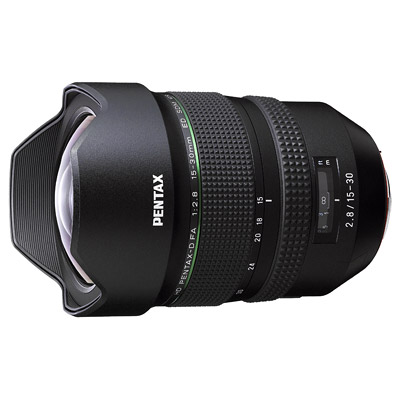 | Pentax HD FA 15-30mm f/2.8 ED SDM WR Pros: Construction, sharpness in the center, excellent lens treatment Cons: Weight, bulk, quality of the hood, autofocus that requires practice Opinion: I bought it used but like new (with ample residual warranty Fowa) and as per Pentax tradition I immediately appreciated the robust construction and tropicalization, which is always an added value. The robustness and the wide opening obviously affect the weight (with the K1 it exceeds 2 kg in momentum) and on the really important dimensions. To store the camera with the lens mounted you need a lot of free space in your bag. Small note on the hood; it is bulky like the rest of the lens but it is only pressing, without clips or fixing springs as they have for example the Samyang. My fear is that in the long run it may loosen and sooner or later end up slipping away on its own. Let's say it could have been done a little better. The optical quality is indisputable. The sharpness is always very good in the center of the frame. At the edges, at the minimum focal length and at full aperture it is less, but if you close a stop the situation improves a lot. About autofocus, well, let's say that "it must be understood". It happened to me the first few times to have blurry images and I was tempted to send the lens for assistance. Then I realized that especially at shorter focal lengths the subject within the frame is really small, so hitting the wrong lens is sometimes a moment. So at least at the beginning it takes a bit of practice before using it correctly, and then you will get great satisfaction. One last consideration on the price: the quality of the lens is remarkable, but if it cost 2-300 € less (from new) it would be perfect. sent on June 01, 2023 |
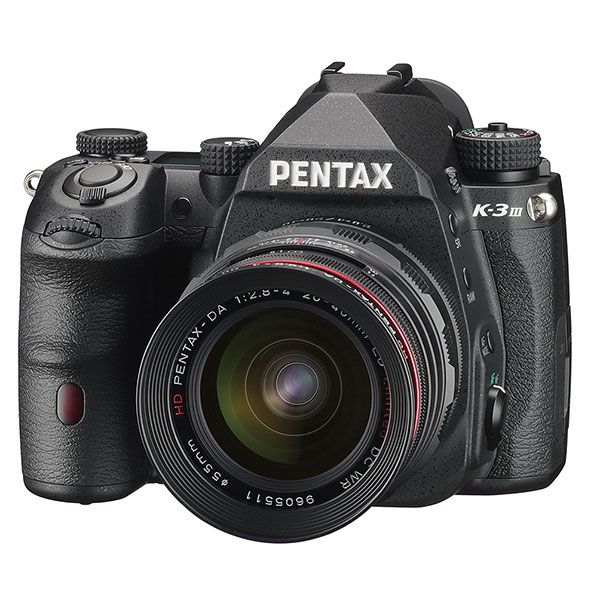 | Pentax K-3 III Pros: Autofocus (finally) performing, excellent resistance to high ISO, infinite possibilities to customize the parameters Cons: Fixed display, some commands to review, battery life not great Opinion: sent on July 22, 2022 |
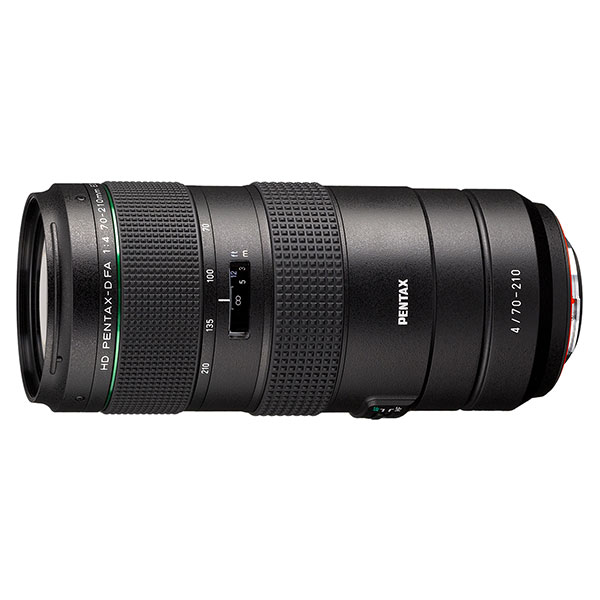 | Pentax-D HD FA 70-210mm f/4 ED SDM WR Pros: easy handling, robust construction, imperbeabilized, responsive autofocus (and with limiter) Cons: not extraordinary sharpness at the edges on the full-frame format, autofocus to be calibrated well, the bracket for the tripod is missing Opinion: Purchased used but equal to the new, I took it to replace the 60-250mm f/4, always valid but not compatible with the full-frame format of the K1. I immediately appreciated the sturdy and waterproofed construction that allows it to be used even in non-optimal weather conditions. It is not a featherweight (almost 9 hectograms) but it swings well thanks to the fact that, unlike the 60-250, it has an internal zoom and its length does not change by varying the focal length. However, a bracket for the tripod would have been convenient, which is not available. The hood, as per Pentax tradition, has the convenience of the window to rotate the polarizing filter without removing it. Positive notes from the autofocus, which is certainly more responsive than the old SDM, but must be calibrated "in-camera" carefully because in some cases it tends to hook the wrong part of the subject. Once hooked, however, it proves to be quite precise in maintaining the fire. A praise for the presence of the limiter, even if it has a somewhat narrow range of action (from 95 cm to 2 meters and from 2 meters to infinity). Lights and shadows on the optical rendering. The sharpness is very good in the center practically always, but at the edges it leaves a bit to be desired at least up to f/5.6, then it is progressively improving. It works much better on the APS-C format of the K3-III, where in addition to the more responsive autofocus it is appreciated for the sharper sharpness, since it uses only the central part of the lenses. The price from new in my opinion is quite high, especially if you consider that it is not an original Pentax project, but having bought it second-hand paying it about 25% less I can not complain. Abundant 7 rating sent on May 11, 2022 |
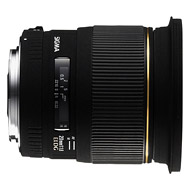 | Sigma 20mm f/1.8 EX DG Pros: Very bright, interesting bokeh, good color rendering, sturdy construction Cons: Not very clear at f/1.8, autofocus that must be calibrated with care, uncomfortable and anachronistic AF/MF selection, availability of the hood Opinion: Purchased used (Pentax-K mount) at an attractive price, it lends itself well to environments with low light and in general for somewhat "creative" shots, as long as you do not expect a stratospheric image quality, especially at the most open apertures. At full aperture the sharpness is discreet in the center but really poor at the edges, to get good results on the whole frame you have to close at f / 8. It must be said that diaphragm already at f/2 in the center improves a lot. I often use it between f/2 and f/2.8, and taking advantage of the minimum focus distance of about 20 cm, you can get very special photos, also thanks to a soft and gradual bokeh. Surely the large aperture requires you to calibrate the autofocus carefully through the fine adjustment "in-camera", otherwise focusing on the wrong point is a moment. Still on the subject of autofocus I emphasize, in addition to a certain slowness, the inconvenience of the AF / MF passage, which betrays the age of the lens. The large diameter of the front lens (82 mm) means that you have to spend a lot on a basic set of filters, luckily I already had those for the Pentax 24-70 f/2.8, which has the same diameter. Finally I point out that I was sold without a hood, and that this is really difficult to find. You can fix it with that for the 24-70 f/2.8 of Sigma, but of course you have to know... Rating 7 sent on July 22, 2021 |
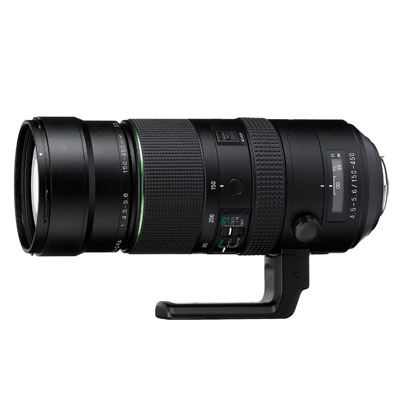 | Pentax D FA 150-450mm f/4.5-5.6 ED DC AW Pros: robust construction and tropicalization, good overall sharpness, precise autofocus and improved speed, some very useful functions Cons: weight, footprint, slightly hard zoom ring, maybe even the price Opinion: I took this lens essentially for motorsport because on the long focal points I was discovered on the K1, and I reserve the right to eventually integrate the review as soon as it is possible to watch some live races, since now it is only run behind closed doors. I have tried it in other situations, especially on bird life or testing it on cars that pass under the house, and the first thing you notice is certainly the most reactive autofocus compared to the Pentax SDM (to be clear that of 200 and 300 mm), manages to follow the subject better while maintaining a more than good precision, especially using the central focus point. Also taking advantage of the peripheral points on some rare occasion hesitates a little if the background is confused, but this I believe also happens for other optics. I believe that the limiter, which Pentax has decided to install, contributes to this improvement. It was definitely time! Another merit is the good overall sharpness. Buying it I expected a situation a little compromise given the not indifferent focal excursion, instead even at 450 mm and at full opening the frame is appreciably sharp especially in the center. At the edges it is a little less, but just close by 2/3 stop and the situation improves a lot. Moreover, given the excellent dynamic range of the K1 sensor (the only body I use it on) you can unraam without fear of raising ISOs. Obviously no problem at shorter focal points, where it can compete with 300 mm, and aberrations appear only in very rare cases on the margins between the very closed shadows and the lights at the edge of the burn, but nothing that cannot be solved in PP. Certainly useful the zoom lock at the minimum focal point, even if on my specimen the ring is a bit hard so it is difficult that it can extend during transport, and very intelligent the preset of the autofocus, with which through the buttons on the barrel you can set a focus distance and recall it in case of need, a valuable function for example in racetrack races where cars pass more or less always on the same trajectory, therefore at the same distance. A nod to the construction, rocky and tropicalized as per Pentax tradition, and very well studied the graft/disengagement system of the (robust) bracket for the tripod, impossible to accidentally remove. A little light but all in all adequate the lampshade, with the front covered in rubber. Among the "cons" there is definitely the weight. It is useless to turn around, it is really heavy, with the K1 you exceed 3 kg and this, combined with the fact that the lens stretches quite zooming in, quite limits the handling. We need sturdy arms because after half an hour of freehand use you begin to feel various sores and pains, so a monopid is practically a must, or at least a support for elbows (wall, balustrade, table, etc...). Personally for the transport I exhumed a large and robust padded strap whose lower plate screws firmly to the bracket for the tripod, so that I can hold it crossbody without weighing it on the neck (and the cervical thanks!). Having said the relative hardness of the zoom ring, a reference to the price, which seems to me a little high again. I bought it during pentax's "cashback" campaign, so with a 10% discount, plus an additional small discount from my shopkeeper, for a sum of very little more than 2000€, and in my opinion this should be the right price, adapted to the quality and certainly remarkable performance of the optics. Vote 8 full. sent on March 04, 2021 |
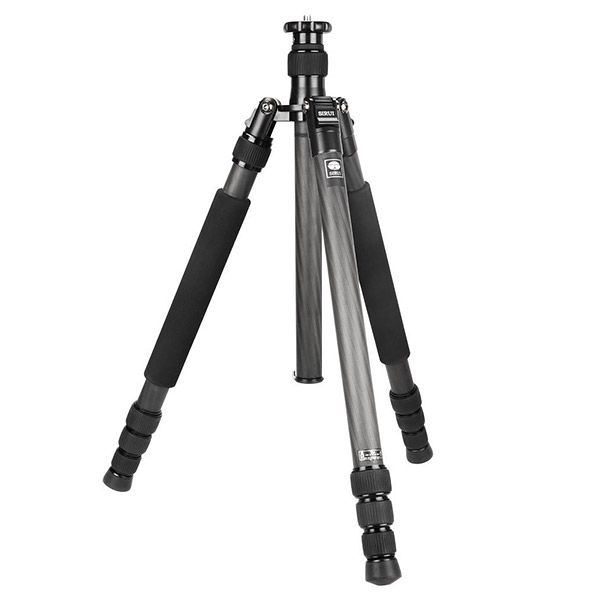 | Sirui N-3204X Pros: Great stability, relatively light, very high even without extending the central column, robust construction and cared for in detail Cons: The central column cannot be placed horizontally, with a three-movement head mounted it is very difficult or impossible to store it in its transport bag Opinion: I start from the assumption that I found this easel in promotion at a cost of 320 euros, so for me the value for money is unbeatable. Despite the 4 sections of the legs the stability is at full test, and for amateur or semi-professional use is perfect, also because personally I do not think I will ever reach the maximum range 18 kg declared. In addition, even without extracting the central column reaches a remarkable height, indeed in many cases I find myself extending only three sections leaving closed the thinner, for an even greater stability. The sections of the legs, however, lock and unlock by easily rotating practical collars, the click of which makes it clear without possibility of error whether the section is blocked or not. During use it is noted for its great robustness, but the carbon construction makes it relatively light and, all in all, manageable and easily transportable. The only problem is that you can store it in the beautiful bag supplied only without the head, so if you plan to use it often during the work session and do not want to disassemble it and reassemble it continuously, it is better to carry it by hand or with the strap included in the package. Note: this applies to me that I use a three-movement head, it may be that with a less bulky ball head you can safely use the bag. Another flaw found is that unlike other brands, for example Manfrotto, the center column cannot be placed horizontally but only vertically. However he is forgiven with great care in detail. Very useful the hook under the central column to hang the bag or other objects and increase stability, and always the column itself can be removed and, after unscrewing the bottom, the top one can be reassembled (also wanting upside down) to be able to place the camera a few centimeters above the ground once the legs are widened to the maximum, ideal configuration for macro photography. Interesting the possibility of removing one of the legs that can become a monopod, and very comfortable rubber feet; screw them discover very useful metal tips in case of slippery or icy terrain. It is worth remembering that in the package, in addition to the bag, there are the brusqueness and wrench necessary for disassembly and adjustment of the head and legs, a spare hook, an additional strap for transport and the instruction booklet. Vote 9 full sent on August 06, 2020 |
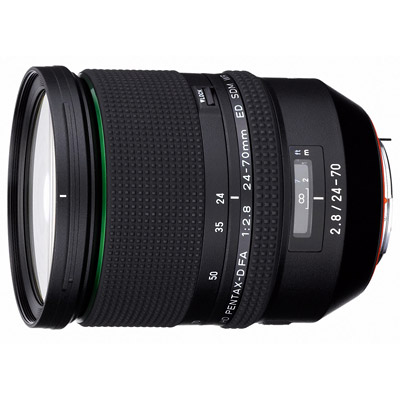 | Pentax D FA 24-70mm f/2.8 ED SDM WR HD Pros: Excellent image quality, excellent construction, tropicalized Cons: Heavy and cumbersome, autofocus not lightning, difraction that manifests itself early, price high enough to new Opinion: There's nothing to say, a very good lens. Sharp the right in the center even at full opening with a soft blur, closing at f/4 becomes sharp on all areas in focus, and at f/5.6 reaches its maximum without decaying too much even to f/16, limit beyond which, however, suddenly begins to show disreaction. In addition to tropicalization, the solid and robust construction of a professional level is appreciated, only the lampshade seems to me a little miserable. On the other hand, it is heavy (more or less like the 200 mm f/2.8) and carrying it around for long sessions is business for sturdy necks (and no cervical problems...). The footprint is also relevant and you need a large bag or backpack to store the camera-lens set. The front lens with a diameter of 82 mm also makes a "basic" kit of filters expensive. The autofocus, once calibrated in-camera, is accurate. Mine suffered from a bit of back-focus, easily solved with fine adjustment. It is not lightning, also because of the weight of the lenses to be moved, but it is very quiet. Finally the price; the quality is all there and you know that the quality you pay, despite this it is not cheap, and from my point of view I think it should cost a good 100-150 euros less. The problem, unfortunately, is that for Pentax full-frame alternatives there are none. Vote 8 full sent on June 17, 2020 |
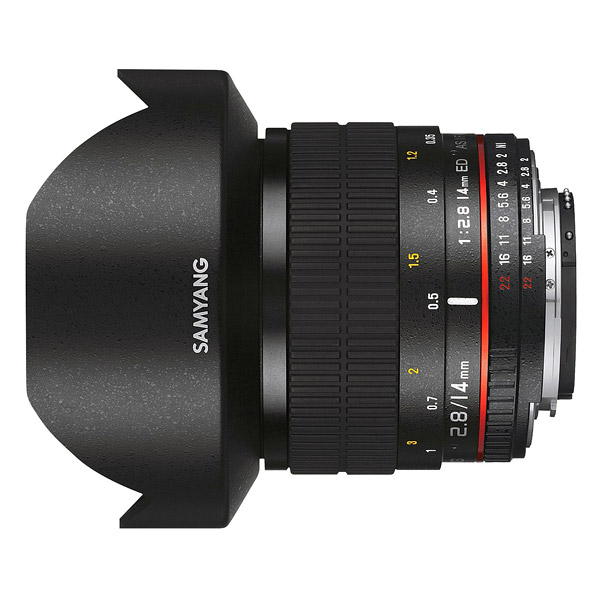 | Samyang 14mm f/2.8 IF ED UMC Aspherical Pros: Very bright, sharpness in the center always good (from f/5.6 even at the edges), affordable price, smooth and precise focus dial Cons: At full opening the edges are not the maximum, obvious distortion and not always correctable with ease, bulky lampshade, voluminous cap Opinion: I took it essentially to photograph the sky (milky way) and the stars, but it also behaves well in other situations. The maximum opening f/2.8 makes it possible to shoot even with little light without having to raise the ISOs too much, while if the light is good just set a diaphragm f/8, put in hyperfocal and you can forget the focus ring. It is fluid and well-fried, and with the distance scale much more precise than other objectives of the same brand that I own. Using it practically only on full-frame (Pentax), I can count on a huge field angle but that requires attention, because including unwanted details is a moment, so watch out for the edges when you shoot. Even the bubble put is important, penalty very flashy drooping lines. The sharpness in the center is always good while the entire opening the edges are not at the top, they improve a lot of diaphragm and already at f/5.6 you can count on a very good sharpness on the whole frame, and excellent in the center. On the other side the distortion is quite noticeable, and rather difficult to correct completely, so I do not recommend this lens for architectural photos or where it is essential to have perfectly straight lines. One last note is about the dimensions, which are quite important, that combined with the fixed lampshade and the voluminous cap (and poor quality) mean that to store the camera with the grafted lens it takes a lot of space. However, considering the features the price is affordable and if you need a wide angle pushed it is worth having it in the kit, also because the alternatives for Pentax are very limited and cost double or triple, if not more. Vote 8 sent on May 06, 2020 |
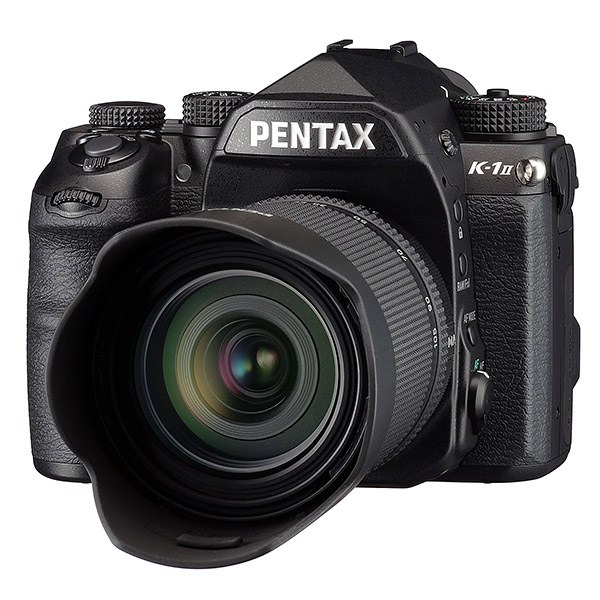 | Pentax K-1 Mark II Pros: Dynamic range, incredible hold at high ISO, endless customization possibilities, stabilized sensor, waterproofing Cons: not-so-contained weight, autofocus points too grouped in the center, small top LCD display, slightly limited burst, slightly cumbersome orientable display Opinion: I just made the big jump and switched to full frame. I knew the image quality would benefit, but I didn't imagine up to this point. The dynamic range of the K1-II is spectacular, the tonal passages are very gradual and nuanced, and the hold at the high ISO is really remarkable, a photo taken at 800 ISO looks like a shot with a 200 ISO APS-C. You can pull out details in quantities with really minimal quality loss even at 6400 ISO. If you want the maximum you can activate the "pixel shift" function, which allows for even better resolution, sharpness and noise reduction. Less effective but still quite useful the "pixel shift" function with image stabilizer. Swallows and buttons can be customized at will, and the "smart-function" dial is a small stroke of genius, and once assimilated its operation simplifies things a lot. As long as those who come from the Pentax world will not struggle to find familiarity with the various commands. The stabilized sensor allows you to do amazing things even with vintage lenses, which find on the K1 their original size, managing to unleash all their potential. Obviously need quality optics, because the 36 mpx sensor foresth and not. I haven't had the chance to test the goodness of waterproofing yet, but I don't think I'll be disappointed. Of course it is not a featherweight, those who come from the APS-C type K70 or K3 will immediately notice, as you will immediately notice, alas, the autofocus points all grouped in the center of the frame. It's probably a choice made to be able to use them even in "crop" mode when using lenses that are not compatible with the full frame format, but in many cases you are forced to focus and then recompose the shot. The upper LCD display is also much smaller than, for example, that of the K3, due to the clutter of the dials for the "smart-function", and on many occasions it is not easy to read the information it gives, especially for those like me who no longer have the sight of once... On the other hand, in the crosshairs (really good and very bright) you can see a lot of things. The burst of 4 FPS is also half (8 FPS) of that of the K3, both for the size of the mirror and those of the files to be saved, but basically the K1 is not born for sports photography or very dynamic, and can stay there. In the norm the battery life (be careful, however, that using GPS the range drops a lot), and interesting the orientable display. It always stays on the optical axis of the camera simplifying the composition of the shot even when the camera is not straight, but its particular articulation, although well engineered, is not as flexible as that of a real winding display like that, for example, the K70, less refined but more practical. It places some limits on some shots because in practice you can tilt 90 degrees only upwards while at the bottom and side the tilt is limited to about 35 degrees. In any case, it is a camera that can give great satisfaction, especially if you match the quality opticals or if you want to "exhume" your vintage Pentax lenses. It's going to be pure magic. Vote 9 full sent on March 05, 2020 |
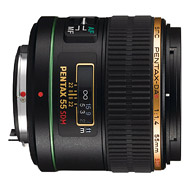 | Pentax SMC DA* 55mm f/1.4 SDM Pros: Bright, precise autofocus, very nice bokeh, sharpness in the center even at full opening, well built and tropicalized Cons: some opening aberration, it's not a featherweight Opinion: Found used equal to the new at an interesting price, after trying it for a few days I decided to buy it. Very bright, it allows you to shoot without big patemi even with little light without raising the ISOs too much. The autofocus has a good speed but not a knockout and is not recommended for fast-moving subjects, on the other hand it is precise and hooks well. At full opening the sharpness is pretty good in the middle of the frame, of course it is much less at the edges but for the portraits this is not a flaw. At f/2.8 the sharpness becomes remarkable throughout the frame, maintaining a creamy and pleasant bokeh, with a beautiful detachment of the floors. Tropicalization is an added value that is appreciated, especially when combined with tropicalized cameras such as the K3. Also noteable is the very sturdy construction, which on the other hand makes it a bit heavy and tends to unbalance lighter cameras (such as the K-S2 or the K70). Note the fineness of the lampshade, solid and covered with black velvet inside to avoid reflections. A tip: if you want to fully enjoy its large opening even in broad daylight equipped with an ND2 or ND4 filter because, from personal experience, on sunny days even 1/8000 sec. may not be enough to avoid overexposed shots. The price is certainly not popular but at the end of the day it is appropriate for the quality of the optics. If you find a good used, don't let it get away with it. Full rating 8 sent on December 16, 2019 |
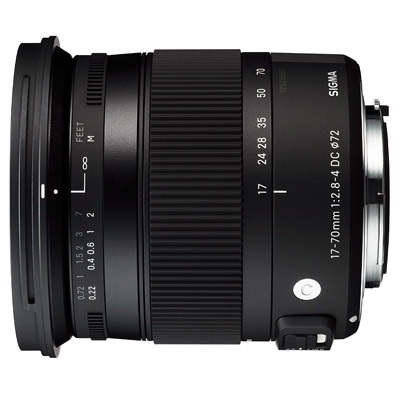 | Sigma 17-70mm f/2.8-4 DC OS HSM Macro C Pros: Good sharpness in the center at each focal, precise autofocus (once calibrated) and quick, robust construction, compatibility with Sigma's USB-dock Cons: Front cap and non-excellent quality lampshade, f/2.8 aperture only up to about 22 mm, reverse zoom wheel rotation, maf dial too thin Opinion: Purchased new to replace the efficient but outdated Pentax 17-70 f/4, at the moment I can confirm all the merits described in the other reviews. The optics are very handy despite the fairly voluminous front lens, and as usual Sigma the materials are simple but well assembled and give a pleasant feeling of robustness. They scan the front cap and the lampshade, decidedly cheap and a bit "pulled away". Optical qualities are out of the question. In the middle the sharpness is very good even at full opening and a bit to all the focal points. It goes without saying that at 18 mm to f/2.8 the angles necessarily can not be very engraved (for that there is the series "Art"), but if you close to f/5.6 everything goes in place and you can count on a sharp frame up to the edges. Note that, although not a macro in the strict sense of the word, it allows you to get very close to the subject, just enough to get very interesting and impressive shots. The autofocus is quite quick and above all accurate, but I recommend investing a few extra money in the purchase of Sigma's USB-dock, you won't regret it. You'll lose a little time but in the end you'll have a very precise focus at all the focal points and for all distances. By the way, the focus dial is well braked but is quite thin and impractical for those with large hands, also it is unusable with the paralamp mounted backwards. You also have to be careful because in autofocus wheel, so it can be hindered by the fingers that support the goal. Finally you have to get used to the zoom dial that rotates in the opposite direction to the various Pentax, Nikon, Tamron, etc. It is still a lens that is worth every penny spent, it is the right choice if you want an all-rounder who gives you quality shots traveling light. Rating 9 full sent on June 06, 2019 |
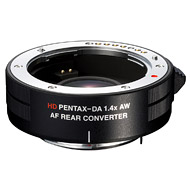 | Pentax HD DA AF 1.4x AW Rear Converter Pros: Robust construction, optical quality, is tropicalized Cons: Not compatible with full frame, price from new, tends to unbalance the camera Opinion: Bought second-hand, after some generic tests for the fine adjustment of the autofocus, I immediately imposed the "baptism of fire" at the Monza racetrack, and I must say that I was very impressed. Used on the 60-250 mm f/4 and 300 mm f/4 and grafted on the K3-II, I did not detect substantial decreases in sharpness of both lenses, and a near total absence of chromatic aberrations, except on extreme contrasts. More complex is the talk of autofocus. Taking note of the note slowness of the first generation of the SDM, with the addition of the multiplier does not slow down much, but obviously struggles a little more to keep the subjects in focus fast moving, both for the obvious decrease in brightness of the lens (1 stop), and for the equally obvious decrease in the depth of field, so it takes a little more expertise. Stretching the optics to which it is paired, it tends to unbalance forward the whole set, especially with the 60-250 zoom, which at maximum focal becomes challenging enough to wield, and it is highly advisable at least the monopod. Attention, it is not compatible with the full frame format of the K1. If you use paired with 200 f/2.8 and 300 f/4 you must set the APS-C cropping mode, otherwise it vignettes heavily. Anyway it's a well-made accessory. Having bought it used I can not criticize the price, but from new it should cost about fifty euros less to align with the most qualified competition. Full rating 8 sent on April 08, 2019 |
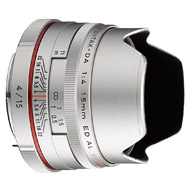 | Pentax HD DA 15mm f/4 ED AL Limited Pros: Lightweight and compact, sturdy construction, minimum focus distance, built-in lens hood Cons: Not bright, autofocus a bit noisy, sharpness at the edges not at the top at T.A., screw cap impractical Opinion: Bought used but in terms of the new, I appreciated right away the compactness that allows him to go virtually unnoticed, especially in the version "Black" like mine. Compact but sturdy, all in metal, including the built-in hood, of an infinite comfort because you just need to extract it from the front and is immediately ready. On the other hand the front cap is screw, impossible to accidentally come away but it is rather cumbersome to put and remove. It is not bright, but the compactness has its own price and however being a 15 mm you have great margin with the time of safety and with a little ' attention takes home the photo even with 1/5 sec., and also the depth of field is huge even at F/4. At full aperture the sharpness is good in the center, less at the edges, but just close one stop and the situation improves decidedly on the entire frame, to reach the top at F/8. The autofocus is accurate and fast enough, although it really does not have to work so much view the above-mentioned remarkable depth of field (with good light just put at F/8 and in hyperfocal), but it is noisy and in environments like theatres and museums it makes you feel. The price is not really popular but in the end there is, given the robust materials and optical qualities, and if you are fortunate to find a good used is definitely worth buying sent on February 28, 2019 |
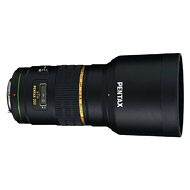 | Pentax SMC DA* 200mm f/2.8 ED (IF) SDM Pros: Good sharpness at full aperture, quiet and precise focus, rugged Cons: Inadequate Autofocus, missing tripod bracket Opinion: Taken used equal to the new, I'm really happy with the purchase, and I am naturally comparing it with the "Big Brother" 300mm F/4 that I already own. The materials, as traditionally Pentax, are sturdy, of excellent quality and well assembled. Optical qualities are out of the question; Clear the right in the center at full aperture, it is a little ' less at the edges than the 300mm, but being an F/2.8 instead of a F/4 is there. Closing one stop sharpness improves on the entire frame reaching the great levels of the elder brother. Compared to the latter, which was perfect as well as pulled out of the box, with the 200mm I had to calibrate the fine autofocus on a + 7 because it had an obvious back-focus. About autofocus, this mirrors all the lights and shadows of the 300mm: The SDM is very quiet and a surgical precision, but alas also quite slow and not equal to the other great qualities of optics. In my personal opinion is not very suitable for fast moving subjects (for example motor races or very fast animals), but for everything else is fine. Last negative, maybe it was worth predicting a support bracket for the tripod as for the 300mm. True is that compared to the latter is lighter than about two, but still weighs more than 800 g and in different situations, especially in the vertical shots, would have done really comfortable. However it is a very valid and highly recommended goal. Rated 8 sent on December 30, 2018 |
 | Pentax SMC Takumar 55mm f/1.8 Pros: sharpness, brightness, light and manageable, construction Cons: No one in particular Opinion: Purchased from a friend at €60, in my opinion it is worth many more. It strikes above all an unsuspected sharpness, good already at full aperture, especially in the center, but that already closing of a stop becomes excellent. Do not believe, if you think about the age of this optic (1972). Definitely not afraid of the 24 MP's of the Pentax K-3. The opening of f/1.8 allows to shoot without too many worries even in conditions of light not optimal, provided of course to focus well, because focusing with precision at full aperture, without autofocus, is anything but easy. Careful construction and robust materials, nothing to do with the "Plasticotti" of today, even of high range, but nevertheless it is small and quite light and it is very good. Also on my specimen the aperture and diaphragm nuts are perfect and make it enjoyable to use it. Color rendition that may seem slightly cold but it's actually very natural. The only detail that betrays the age of the project is the resistance to flare only discreet, but still in some cases does better than so many other peers. Having the M42 graft can fit to cameras of different brands with a simple adapter ring, but of course it makes the best of Pentax and, in general, with stabilised sensors. To have absolutely. Rated 10 full sent on November 02, 2018 |
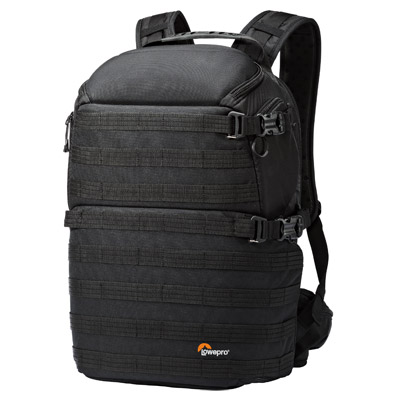 | Lowepro ProTactic 450 AW Pros: Very capacent, customization of the internal divisions very varied, robust materials Cons: Empty weight, not very comfortable shoulder straps Opinion: I recently took it to replace my loyal Tamrac now at the limit of wear, after a choice between various brands and models. You can immediately appreciate the robust materials, especially the rigid top cover, and the many possibilities of customizing the interior. For example I chose to make a large compartment for various objects in the upper part and to extract the camera from the side. To be detected also the practical straps supplied to hook outside the desired height the tripod holder and a container. Small side pockets at the top, where there is small and thin stuff (like the cloths to clean the lenses or memory cards), while the compartments on the belt are wider and useful, for example, for spare batteries. More or less large pockets are inside. Beware of the higher average vacuum weight (over 2.5 kg), if you want to carry the backpack in the airplane as hand baggage, because if you charge a lot of equipment you risk to overtake weight limit imposed by some companies. Another thing to note is that the large capacity and robustness causes to fill it a lot, and then carry it can be a problem also because the shoulder straps are not very padded in the long are uncomfortable. Anyway it's a great product, and I highly recommend it. Rated 9 full sent on October 21, 2018 |
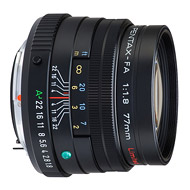 | Pentax SMC FA 77mm f/1.8 Limited Pros: Always sharp, professional construction, autofocus precision, diaphragm diaphragm diaphragm, light and manageable Cons: Noisy autofocus, some (slight) chromatic aberration, missing the AF/MF switch on the barrel, "silver" version a bit flashy, front pressure cap Opinion: Taken used but equal to the new, it turned out to be a great purchase right away. You immediately notice the metal construction and professional-level assembly, which give the impression of an object built to last a long time. Pay attention to the front cap, metal and finished inside with the velvet, but it is on simply pressure, without "clip" fixing, and losing it is not such a remote eventuality. I happened to find him more than once at the bottom of his bag when I pulled out the lens. The sharpness is exemplary at all openings, without decaying even to f/22, to the point of being perhaps too engraved for portraits. Notice some slight aberration up to about f/2.5 on extreme contrasts, but it corrects without problems. The autofocus, once calibrated with the fine adjustment of the camera, is of a precision I dare say "surgical" and discreetly fast, although quite noisy (beware, the ring rotates with autofocus). In quiet environments such as theatres and museums it is better to use it in manual. By the way, the lack of the AF/MF switch on the barrel is a small inconvenience, you have to resort to the stick on the camera. Having found it used, I had to "satisfy" the silver version, which definitely does not go unnoticed. I bought it to replace the giant Sigma 85 mm f/1.4 HSM. This is also a remarkable goal, with quite similar optical features (perhaps with a few extra violet fraying at full opening) but compared to the Pentax it weighs almost three times and is much more cumbersome, even more so with the huge lampshade, while in the Pentax the latter is embedded and removable. A great comfort! Finally, the diameter of the filters is 49 mm (exactly like the 50 mm f/1.8), while in the Sigma it is as much as 77 mm. A view that is absolutely to be had. Rating 10 sent on May 08, 2018 |
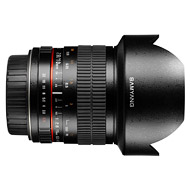 | Samyang 10mm f/2.8 ED AS NCS CS Pros: Very good overall sharpness, brightness, well-built, unbeatable value Cons: Fixed lens hood, front Cap voluminous, inaccurate and unreliable distance scale Opinion: I found it used a cheap (Pentax-K) and I consider a purchase right. First of all, the aperture f/2.8 allows you to shoot even in low light without worries. Then the clarity, very good wide open in the Middle, and even at the edges is not bad. Stopping down to f/5.6 becomes sharp across the frame, which is rare for a wide angle so pushed. At constant aperture, in many situations it seems better than the Sigma 10-20 mm f/3.5. A few aberrations, mostly in corners and in extreme contrast situations, but can be removed with a few clicks. Unlike other Samyang lenses that I could try, this looks well built, with simple but sturdy materials. The graft is made of metal, for example. The hood is fixed, so in addition to not allow the use of filters, screw makes it cumbersome, even more so with the huge front CAP, which is pretty much impossible to put into your pocket when you remove it to photograph. To store the camera with the lens implanted it really takes too much space. Downfall finally for the distance scale of the focus ring. On my printed copy is clearly wrong, actual distance do not correspond to those marked on the knob, even the infinite is wrong, and after some empirical evidence I had to work with pieces of colored masking tape on distances. Luckily the huge depth of field minimizes the problem but on a manual-focus seems like a major flaw. Anyway, that aside, I would recommend it highly enough. Rating 8 sent on April 19, 2018 |
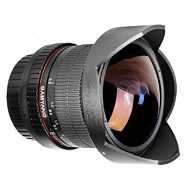 | Samyang 8mm f/3.5 UMC Fish-eye CS II Pros: Good value, weight and size content Cons: Imprecise distance scale, building a little rough, mediocre sharpness wide open Opinion: I purchased this light (Pentax-k) for some fun, having found new at a great price. The aim is rather light and compact, bearing in mind that is a fisheye, and you brandeggia well. Manual focus per se is not a problem, given the huge depth of field, but the distance scale is not very precise and the first few times you have to go a bit trial and error before finding the right match between the distance marked on the bezel and the real one. Sharpness wide open isn't bad in the Middle, but the edges leaving a lot to be desired and to get good results you have to close at least at f/8. On my copy there is a strange hint of vignetting in the upper-right corner, it becomes more evident as you close the aperture. Even the graft-disengaging from the camera body is hard. These indices to approximate quality control and rushed. Probably if I'd paid full price I would have already returned, or at least sent in for service. Anyway it is a perspective altogether honest, with which you can have fun making unusual and different from the usual shots, as long as you keep in mind its limitations. Rating 6 sent on March 30, 2018 |
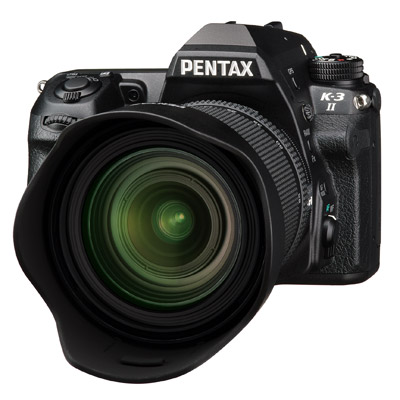 | Pentax K-3 II Pros: Robust construction, tropicalised, intuitive menus and commands, dynamic range (especially with the "pixel-shift" function), native DNG files Cons: Slightly high price, fixed display, missing built-in flash, little diffused Pentax graft Opinion: Coming from the K-3 "normal", I found myself immediately with the commands and menus, obviously very familiar. I also found the sturdy tank construction and the storm-proof tropicalization. The ability to shoot in DNG format "native" is a plus that have few competitors even much more expensive. Also the sensor maintains the same remarkable dynamic range of the previous model, further implemented with the function "pixel Shift", which in some situation gives a nice hand, especially when using high ISO. In contrast, over the pentaprism was inserted the GPS (with Astrotracer function) and was sacrificed the built-in Flash, which on several occasions is precious to fill the shadows and as lightening flash. In my opinion maybe it was better to keep the flash, since in the Pentax price list is available at the price of a dedicated GPS module to engage on the hot shoe. It would have been much more useful to have a nice articulated display like the K-S2 or the K-70. Battery Chapter: The duration is very good, but it drops drastically if you use the GPS and/or the "pixel-shift", so it is better to have at least one spare. It's not a cheap camera, but we can stand it if you consider the endless features available and construction on a professional level. The real problem is the ever-less availability of third-party optics (read Sigma and Tamron) with Pentax-K graft. But this is another story... sent on March 06, 2018 |
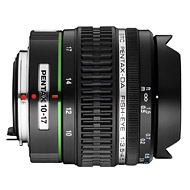 | Pentax SMC DA 10-17mm f/3.5-4.5 ED Fisheye Pros: Sharpness in the center good, small and relatively light, autofocus not very fast but reliable Cons: Focus ring too soft, is not a fixed f / 3.5, sharpness at the edges to ta not exceptional Opinion: Purchased used at a good price, it is an interesting and in some ways amusing optics. The sharpness in the center is good even at full aperture, but at the edges leaves a little 'to be desired, especially at shorter focal lengths, but closing at f / 5.6 everything is resolved. The autofocus is not particularly fast (but on a lens like that you do not need a lightning) but it is accurate. Problems start when you want to focus manually; the ring is too soft and rotates as soon as you touch it, with the risk of getting blurred shots. In some cases it may even be useful to hold it in place with a piece of tape. It is also very thin and those with big hands struggle to maneuver it. Apart from this, I would recommend this lens to those who love the genre and do not want to spend a fortune. Rating 8 sent on January 24, 2018 |
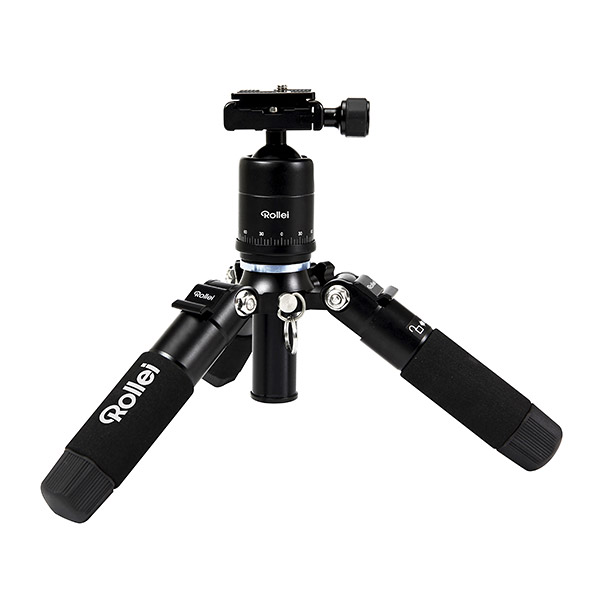 | Rollei Compact Traveler Mini M-1 Pros: Sturdy, stable (with central column lowered), rather small footprint when closed, inconspicuous, fluid ball head, excellent quality / price ratio Cons: Effective range much lower than declared, not stable with central column up, difficult to position it for vertical photos, it is not very light Opinion: Purchased on Amazon for a valid alternative to the classic tripod, it turned out to be a good buy. When closed it is not very bulky and fits comfortably in a backpack, or in its belt case. Once opened, you immediately notice the excellent finish, strength and stability in the position of use. It is less stable if you extend the (very short) central column, because you have to tighten the fixing wheel very tightly, with the risk of damaging the thread. If you need more height, it is better to extend the sections of the legs, which can be positioned at various angles (even upside down, if desired) to adapt to the most difficult situations. The rubber feet guarantee good adhesion. Unscrewing the lower part of the central column you can lower the camera to the ground, to the delight of those who love macro photography. The ball head with Arca Swiss attachment (and built-in bubble) is fluid, well-frictioned and stable once fixed. Its dimensions also make it discreet, especially where iThe tripod would not be allowed. Among the counter the difficulty in making vertical shots, we must help tilting or stretching the legs, and the fact that the weight of almost 800 grams may not be ideal for those looking for something very light, but it is the price to be pay to the robustness. Finally, a flow rate of 8 kg is declared but a flow of only 3 kg is indicated in the enclosed instruction sheet. However I highly recommend it. On the other hand, the Rollei brand is synonymous with quality in the history of photography, and this mini-tripod is no exception sent on January 07, 2018 |
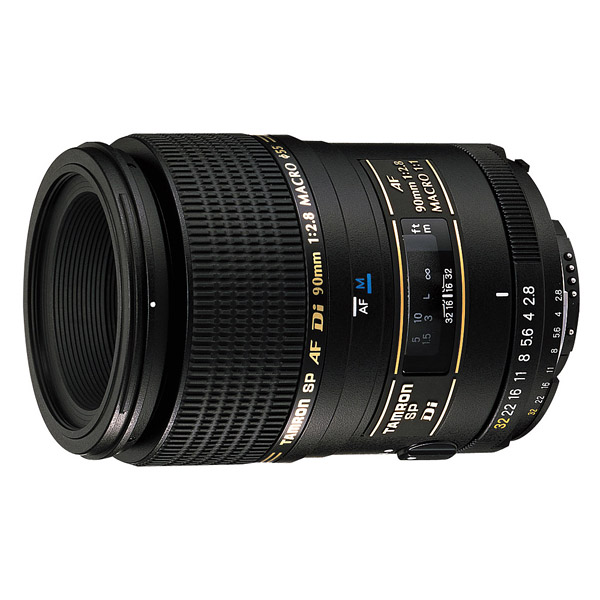 | Tamron SP 90mm f/2.8 Di Macro Pros: Sharpness, lightness, excellent value for money Cons: Noisy autofocus with some sporadic uncertainty, light chromatic aberrations to wide openings on extreme contrasts, bokeh not so soft Opinion: I managed to buy this gorgeous goal before it came out of production (the new one is not produced with Pentax graft) and it was a great buy. Rather sharp already af / 2.8, it becomes a diaphragm of a stop. Its use is not strictly limited to flowers and insects, it is well suited for portrait and for some extemporaneous photos where it is important to enhance the detail. Do not ask him to resume subjects in rapid motion because his autofocus, in addition to being quite noisy, is not a lightning strike and with flat and uniform backgrounds it has some uncertainty, going back and forth several times. When it engages however, it does so with surgical precision. On the strong contrasts there are aberrations of up to about f / 3.2, but nothing that can not be corrected in post production, and yet af / 4 disappears all. Blurry is not really soft, but all the other benefits make the (few) defects in the background. Even though it is a view of the previous generation, it does not matter at all. Tipsatissimo sent on October 29, 2017 |
 | Pentax SMC 50mm f/1.2 Pros: Bright, robust, crisp (if closed), blurred by a dream Cons: Tough focus on ta, chromatic aberrations evident on the strong contrasts Opinion: One of those goals, at its time, was the non-plus-ultra of Pentax production (and not only). It now appreciates the rock and metal rock construction as well as the fluid and fluid iris and diaphragms precise. Great brightness comes in handy when there is little light and allows you to shoot without lifting too high ISO eaf / 1.2 gives you a dreamy blur with a detachment of plans that few modern lenses can give you.rnA large aperture presents the account below Form of longitudinal chromatic aberrations very evident in high contrast areas, a sign that reveals the age of the project and the treatment of rather dated lenses. In these situations, it is better to diaphragm a bit or convert to Juvenile, because they are not easy to correct. Also af / 1.2 the depth of field, especially in portraits, is very small, and focussing (manually, obviously) the desired point is titanic if you have no experience. The ring is precise, but the live-view or an enlarged eyepieceRe are pretty useful.rn But it closes af / 4 everything goes in, and f / 5.6 has a sharpness, even at the corners, unthinkable for a glimpse of 40 years ago. It also does not suffer much from the flare, even though a hood is in need of it. This small gem is not easy to find online and almost impossible in the markets, because one who holds one is tight and sells it at a fair price, but it's worth it. sent on July 25, 2017 |
 | Zeiss Jena Biotar 58mm f/2 Pros: Sturdy construction, unusual focal but interesting, clear frame in the center also ta, very beautiful bokeh, ring maf very precise Cons: Pre-selection diaphragm complicated to use, completely manual Opinion: Purchased by a friend, it is a typically 60s optic that still today can give great satisfaction, especially in close-ups and portraits. At the beginning the pre-selection diaphragm is decidedly difficult, it is not easy to understand how it works and use it correctly and requires a little practice because the various diaphragms are not punctuated by a "click" but are continuously adjustable. On the other hand, the focus ring has an excursion of almost 360 ° and allows a "surgical" focus. On my model is not very soft, but we are talking about a goal 60 years ago and you can forgive it. Zeiss appreciates the blurry, soft and "soap bubble", thanks to the 10 blades of the diaphragm, which has its raison d'être especially in the portrait. On long distances, however, it is better to diaframble at least f / 5.6 otherwise the definition decreases. You do not even need to say that, being completeIn the manual, there is no help in the exhibition, and if it is a pleasure for the most skilled photographers to use it, it can be very difficult for beginners. Finally, I mention the construction, completely made of metal, even the knurling of the focusing rings and diaphragm, which allow a grip and maneuverability unknown to many "plastics" of today. There are several online and in the flea markets, in various versions with 10 and 12 lamellae, and being with an M42 graft it is enough an adapter ring to mount it on almost any digital and to live happily. sent on April 29, 2017 |
 | Pentax M SMC 20mm f/4 Pros: Small and lightweight, rugged construction, the complete absence of fraying Cons: A bit 'dark, completely manual, color rendering a bit' cold Opinion: Despite having 40 years is a perspective that still behaves well with the sensor, rather demanding, riding K-3. E 'completely manual and completely devoid of electrical contacts, so exposure should be calculated, because the camera does not know which diaphragm is set. Like all the objectives of the past, is of robust construction and diaphragms are marked with a "click" that leaves no doubt. It is not very bright, which may be a limit in some case, however, the 20 mm focal length ensures a good margin with the safety times. At the maximum aperture the sharpness falls a bit 'on the edge, but just close to f / 5.6, and the problem is resolved great. Only the colors are not that great. Unlike big brother 28mm f / 2.8, this has made it a bit 'chilly and certain shots need to "warm them" a bit' in PP. It is online or at flea markets for a few tens of euros, and it may be worth it. sent on February 10, 2017 |
 | Pentax M SMC 100mm f/4 Macro Pros: Good yield, rocky construction, focus (manual) very accurate, no distortion Cons: Poor sharpness at full aperture, lens hood uncomfortable and economic construction. Opinion: Another of my "remnants" of the analogue time that still has its say. First of all affects the weight and robust construction, the entire glass and metal. At full aperture is not clear, in fact, to be precise the photos are "evanescent" and with showy halos and aberrations, but already closing of a stop the rendering is very good at f / 11 reaches its top, with a sharpness that can compete with many modern macro. Obviously the focus is manual, but the ring is very smooth and has a very long race (nearly 360 °), which allows extremely precise adjustments. The diaphragms are marked by a "click" reassuring, but lacking the "A" position is not possible to control them from the camera and it necessarily has to act on the ring nut, which may be a limit in some cases. Even the lack of any electronic connection with the camera requires to find the correct exposure for attempts, or based on experience. The only vIt was inconvenience is the hood, which is engaged by pressing two clips but can not be mounted backwards when not in use, so you should store in your pocket or somewhere else when there is the cap. It is also rather plasticky and contrasts with the objective of rocks. However, apart from that, it is still valid perspective. sent on November 18, 2016 |
 | Tamron SP 500 f/8.0 Model 55B Pros: Sharp enough, good yield (taking into account age ...), compact and relatively lightweight, solid construction Cons: Poor Focus freehand, impossible to change the depth of field, not "dialogue" with the camera Opinion: I kept since the days of film, and it is still not bad. Of course, for those who have only known digital photography, using this lens it is like climbing Mount Everest. Making freehand fire is far from easy view of the focal length of 500 mm (that of APS-C become 750), but the smooth and precise ring can be a bit 'in this sense. Being free of the diaphragm can not handle the depth of field, and in fact makes best with static subjects, on a tripod, and possibly with remote control and the mirror goes up. Under these conditions produces very good photos for a perspective of 35 years ago, provided that the light is good. Otherwise the contrast worsens lot. Keep in mind that it is completely devoid of electrical contacts and not "talk" to the modern digital camera bodies, for which the correct exposure must be done based on experience or by trials. Personally I like his bokeh typical reflex reflector, which transforms every point luminosor out of focus in a light donut. In its favor it also said that it is much lighter and more manageable than a traditional 500 mm, and its solid construction (plug, barrel and screw are made of metal lens hood) explains why, at least my copy, it is kept in excellent condition for more than 30 years. it is not surprising that it has not put among the "against" the lack of stabilizer. First of all it would be unfair and absurd to demand it on a view of the '80s, and then in my case I use on Pentax bodies, who stabilization on the sensor, so an extra help. If you can find around (online or in some flea market), it may be worth buying it. sent on November 17, 2016 |
 | Pentax A SMC 28mm f/2.8 Pros: Sharpness even at f / 2.8, ability to use aperture priority via camera, made of very natural colors, sturdy construction Cons: On APS-C becomes a focal almost standard, you have to learn (or relearn) the manual focus Opinion: I have kept this lens since the film (I bought it in 1986), and today I understand that I did bene.rnTanto glass and metal, smooth and extremely precise ferrules, metal coupling, scale pdc; all things unknown to modern analogues objectives (at least those from the price "human") that leave you the impression of a test object bomba.rnLa made then is truly remarkable. Crisp even at full aperture, and with very few aberrations, except in very strong contrasts and still be eliminated in an instant. The colors are rendered in a very natural way, with a slight tendency to the warm tones that I personally do not mind at all. Also, something to be reckoned with, putting the aperture ring to the "A" you can adjust the aperture directly from the camera, even at 1/3 stop intervals, which allows you to concentrate on the composition scatto.rnSul APS -C becomes a 42 mm but, despite losing the wide angle of view, it is more difficult to remove the subject from the background because it keeps pur always a 28 mm optical structure and consequently a large pdc.rnCerto, forces you to brush up (or find out) the manual focus, which can give a headache to those born "photographically" with the digital and the ' autofocus, but for those who grew up with the rollers, use this view it is a treat, and can make the happiness of the holders of the new Pentax K-1. sent on October 27, 2016 |
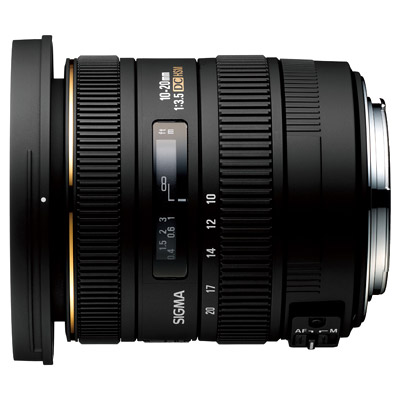 | Sigma 10-20mm f/3.5 EX DC HSM Pros: Brightness, robust construction, little distortion and little flare Cons: Diameter filters, sharpness at the edges ta, a bit 'cumbersome Opinion: 26quot; basic ", the digit to spend can become impegnativa.rnIn combination with the Pentax K-3 is well balanced, while on the K-S2 is rather cumbersome, especially with the indispensable lens hood mounted, however, in both cases gives me great shots . I recommend it without problems. sent on October 18, 2016 |
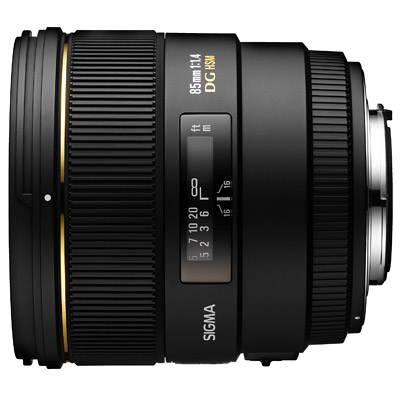 | Sigma 85mm f/1.4 EX DG HSM Pros: Very bright, sharp even at TA (at least in the middle), sturdy construction and with quality materials, unbeatable quality/price ratio Cons: Fringing evident at Ta on strong contrasts, heavy and cumbersome (especially with the hood mounted), optics not easy to exploit completely Opinion: I managed to find one of the last specimens with Pentax graft and I use it with satisfaction on both the K-3 and the K-S2. The great brightness allows you to shoot even with very little light without lifting the ISO too much. In fact, in some situations with strong ambient light, the fastest time of the K-S2 (1/6000) can be even too slow and if you want to shoot at f/1.4 You must use a filter ND2 or ND4. Also at TA maintains a good sharpness in the center, a little ' less at the edges (but in the portraits is less important), but just close one stop and becomes clear on the whole frame, still maintaining an excellent blurry. Blurry that, thanks to the 9 rounded blades of the diaphragm, is very nice. In strong contrasts, at TA you notice conspicuous fringing, which already disappear at f/1.8. You can remove them in PP but you have to work a bit. On my specimen I noticed some (rare) case of autofocus a little iffy in some situations at f/1.4 but, given the low depth of field at these apertures, there is. But generally the autofocus is accurate and discreetly responsive, although speed is not indispensable in a portrait lens. The optics itself, despite the huge frontal lens, will brandeggia well even if it is not exactly a feather, but with the hood becomes very cumbersome, even more if you mount the additional ring for APS-C. In essence it is a great quality lens, sturdy and well built, as by Sigma tradition. It is not easy to use properly and to make the most of the considerable potential requires patience, but once you know it well gives great satisfaction, especially given the price sent on September 30, 2016 |
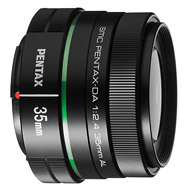 | Pentax SMC DA 35mm f/2.4 AL Pros: Price, clarity, lightness, versatility Cons: noisy autofocus, economic construction Opinion: Bought second hand but in excellent condition, very often use for general and nightclubs photos, knowing they can count on more versatile perspective than you can imagine. Perhaps because of its simplicity, it is also very sharp wide open and, although not as bright as the "big brother" 50 mm f / 1.8, performs well even in low light. The autofocus is quick and precise, but it is quite noisy and not always is the case of use in environments such as museums, theaters, etc ... The plastic construction is cheap, but this is for the benefit of the lightness and ease of handling, always excellent. Highly recommended if you want to have an economic purpose and light but with very good performance sent on July 24, 2016 |
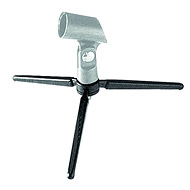 | Manfrotto 209 Pros: Robust, stable, unparalleled portability, ability (within limits) to position the camera held vertically, value for great price Cons: Poorly suited to a full-frame Opinion: I have this mini tripod for some years and I am very satisfied. I bought complete with ball head and proved to be very stable and robust. Not even fear the moderately inclined surfaces and, if you use light optics, you can also venture vertical shots. It carries everywhere, even in your pocket if desired, and is indispensable for an emergency support. The only limit is given by the flow rate of 2 kg, sufficient for an APS-C and perspective "handyman" normal, but a full-frame is a bit 'beyond her means. For the rest is highly recommended, it can not miss in the kit. sent on May 09, 2016 |
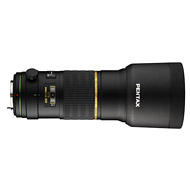 | Pentax SMC DA* 300mm f/4.0 ED (IF) SDM Pros: Exemplary sharpness, excellent construction, tropicalized, excellent value for money Cons: Autofocus not up to par Opinion: I have this optics relatively recently but I have already tried it in different situations (birdlife, panoramas, car races), and I can only say it well. In particular I was surprised by the sharpness, very good already at full opening and that becomes a blade closing by a stop. It doesn't get much worse by closing at most but its top is around f/4.5 - f/5.6. Very few chromatic aberrations, and only at f/4 in high contrast zones, easily eliminated in post-production. Another positive thing is the construction: robust, well-balanced, infuses safety and immediately gives the impression of an object made to last, and the fact that it is protected from dust and splashes of water only confirms this impression. The lampshade (with the comfortable window to rotate the polarizer without disassembling it) and the bracket for the tripod are also well made. Then it is not too heavy and the handling is not bad at all. Of course, grafted on the K-3 you get to almost 2 kg of stuff and for the long sessions I recommend at least one monopod. The color rendering is very natural. The main flaw is the autofocus, not up to the other great features of the lens. It is very precise and hooks the subject well, but struggles enough to follow it if it is in rapid motion. In track races, in some cases I found manual focus on one point more effective and wait for the car to pass by. Perhaps an AF limiter would at least partially solve this problem, which is quite typical of the SDM. There is good that, at least my specimen, does not suffer absolutely from front or back-focus. I took it out of the box, grafted it on to both the K-3 and the K-S2, and found it was perfect enough. So apart from the autofocus, I think it's a really good lens, which I highly recommend. It's worth every penny of its price. sent on April 28, 2016 |
 | Zenit MC Zenitar 16mm f/2.8 Fisheye Pros: Sharpness, strength of the mechanical part Cons: He loses some 'of its charm on the APS-C Opinion: I decided to retrieve this lens I had pulled out of a box as I put order in my closet, and I would say that even after 15 years (I had already bought second-hand at the time) still makes a great impression. Of course, the APS-C loses much of its charm because it becomes a 24mm, but I used it with satisfaction on my Pentax, the K-3 and K-S2. The distortion typical of fisheye, albeit less pronounced than the "full size" of the film is pleasant, the sharpness is fairly wide open, especially at the edges, but it becomes sharp (at least in my copy) already at f / 5.6. I use it very often on a tripod and remote control, but just set to f / 8 and you can forget the focus by dell'iperfocale immeasurable. It 'a great "glass", not very light in relation to the size but it gives a feeling of quality and solidity unknown to many objectives of today, the aperture ring has fits well defined and qushe focus it is fluid and precise, although in reality it is not used that much. If you can find him still around strongly advise you not to miss it because it is really worth it. sent on December 10, 2015 |
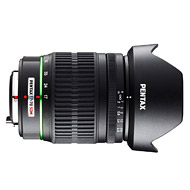 | Pentax SMC DA 17-70mm f/4.0 AL (IF) SDM Pros: Excellent zoom range, light, constant aperture of f / 4, not very fast but precise autofocus Cons: Poor sharpness to the shorter focal edges, ring maf "inconsistent" in manual, non-tropical conditions Opinion: I purchased (second hand) to hold this view basically almost always mounted on K-S2, and how to "battle" if the purpose just fine cava. The autofocus does his duty, not the speed of light but precise, and I have not encountered problems with the SDM. The aperture f / 4 constant solves many problems, meaning they do not have to worry about the drop in brightness, zoom, though the focal shorter, say between 17 and 20-25 mm, the sharpness of the edges is not the best of life, especially at full aperture. It resolves you can count on a much better result in part diaframmando at f / 8. One downside however is not just the collar of maf is "inconsistent", that is totally lacking in strength and just touch it because it moves. And 'no doubt a nel''utilizzo problem manually, but also in autofocus you must be careful not to touch it, otherwise you may get a blurred picture. For the rest and &serious; a fairly lightweight lens, so it's not a big problem take it back for a long time. Ultimately he makes her figure, and how optical rounder is consigliatissima. sent on November 23, 2015 |
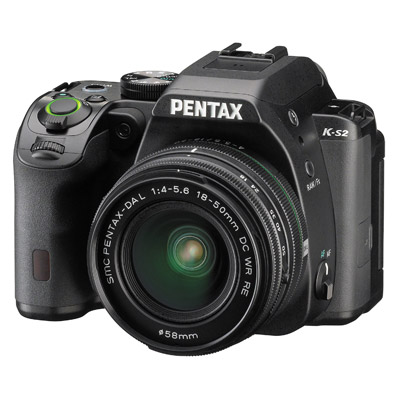 | Pentax K-S2 Pros: low weight, swiveling display (finally!), in well-assembled plastic chassis, endless customization, good noise kept at high ISO, bright viewfinder Cons: Missing the socket for the remote cable release, mirror up operation only if the self-timer, the remote control sensor on the front only, wb daylight with a strong magenta cast Opinion: I purchased the K-S2 to tile flagship K-3, and coming from the latter I noticed some deficiencies. For example, there is no view to the cable remote shutter release, and for me that I love to photograph at night is an inconvenience because with the camera on the tripod you can only use the remote control. Besides, the sensor is only on the front of the camera (K-3 also has one on the back), then to use it must get at least on the side of the camera itself, because if it remains behind there's no way scattare.rnAltro hitch it is the mirror up function. The K-3 has a dedicated menu while on the K-S2 this function can be used only in conjunction with the self, with both the (2 sec.) And with the remote control (3 sec.). RnHo started by listing the "against" because I am the ones that I noticed right away, but I add that being (in theory) a mid-range camera, we can rest and once made a habit youcoexists without problemi.rnGià that there are, I point out that compared to the K-3 the white balance to daylight has a strong magenta cast (both occurred in RTAs in Lightroom), and requires a correction in PP, if not like .rnTra the qualities it takes me the swiveling display. It was time for Pentax to be adjusted to competition. It has excellent resolution and is convenient when shooting from low (back thanks ...). Do not touch it, but not if they miss. Unlike the K-3, the chassis is made of plastic instead of magnesium, but is assembled very well and gives a feeling of strength while being light. It also holds good and all the controls are operated without problems, even the front wheel, which instead a specialized magazine called awkward as too close to the button scatto.rnCome usual for Pentax, the pentaprism viewfinder is very bright, l ' the list is endless customizations and held at high ISO is very good, thanks to a little 'less sensordense than the flagship. Finally, there are some functions "scenes" that greatly simplify shooting in certain situations and do not oblige to pass by various menù.rnInsomma, despite being little more than an entry-level, it is actually a camera that can also make the happiness of most experienced photographer and experienced, with a value for money very competitivo.rnSe only you could use a shutter cable would be perfect. sent on October 14, 2015 |
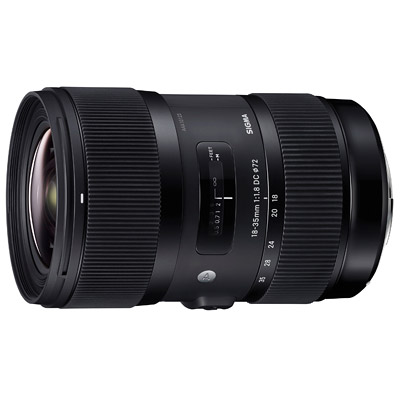 | Sigma 18-35mm f/1.8 DC HSM Art Pros: very bright, very good sharpness even at full aperture, precise focus (with USB-Dock), robust construction, excellent quality / price ratio Cons: bulky and heavy, not tropicalized, zoom a little 'limited, hood and front cap of lower quality than the rest of the optics, USB-Dock practically a must for a precise focus Opinion: I took this optic to replace the Pentax 16-50 mm f / 2.8 on my K-3 and I immediately realized that it is of another generation. Chromatic aberration almost non-existent, sharpness at full aperture good, which becomes excellent as soon as you close the diaphragm a little. Even the focusing is quite fast and very precise, provided however to calibrate it well with the fine adjustment present on Pentax cameras or, better, with the USB-Dock. The latter is practically a must if you want to get the maximum, because the calibration at different focal lengths and distances is not homogeneous from specimen to specimen, and the only way for a really effective set up is the Dock. Operation that requires time and patience, however, but in the end you will be satisfied. The diaphragm of f / 1.8 is a great thing, but with such an opening wrong aim is a moment, so it requires attention in focusing on the subject. The materials are very robust, including the autofocus / manual focus lever, and the ring nuts are slidable.rnIt is cumbersome and above all heavy. Between the camera and the lens, it takes more than one and a half kilos to be taken into account in long sessions. It would be nice if it was tropicalized, but the price would skyrocket.rnMi has disappointed a little 'the hood. It is sturdy but very hard to put on and take off, you are almost afraid of forcing too much and ruining something. In addition, he lacks the "window" to rotate the polarizer, which Pentax instead had. One succeeds the same but it is not easy, especially for those with big fingers. Even the front cap is a bit too plasticy. Finally, the zoom range is lower than most of the most qualified competitors. 35 mm on the canvas side are a little 'little and at least 10 mm more would not have been bad, although doing so probably, wanting to maintain the same brightness, size and weight (and costs) would have been exaggerated.rnComunque, apart from these details, I'm very satisfied with the purchase because & eserious; a great goal, from which you can get great satisfaction. Highly recommended. sent on February 07, 2015 |
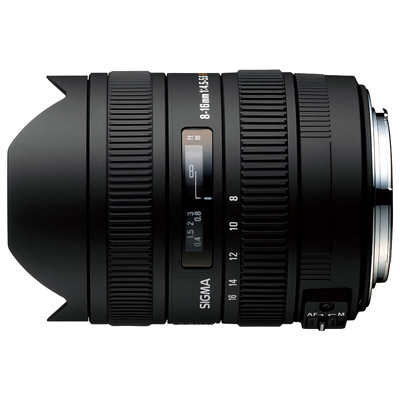 | Sigma 8-16mm f/4.5-5.6 DC HSM Pros: Very crisp; angle of view; little or no chromatic aberration; more versatile than you might think Cons: Ring to focus a little 'tough in the manual; not bright; inability to mount filters; resistance not exceptional flare, the Pentax cameras do not "read" the focal length below 10 mm Opinion: In my opinion it is a very good lens, although it is clear that it can not be used as a normal zoom. In fact, with very short focal offers prospects really exaggerated and very specific, that can not be nice to see if the picture is composed with care, or if you do not keep the horizon diritto.rnL'ampio angle field but is also her trump card and allows impossible shots for other optical, especially indoors. Personally I also used to photograph the star trails and fared very well because it can take a large portion of the sky. Of course, the fact of being dim forces inevitably to rise with the ISO, but for sure you will never have the problem of the shallow depth of field. It is also clear almost always, at every opening and focale.rnLa the focus ring is a bit 'hard switching to manual focus, but it may be a defect in my copy. resistance to flare even notare the maximum, sometimes they notice annoying reflections even if the light source is in the frame, and in some cases can ruin a great picture. More important is the fact that the Pentax cameras (therefore also my K-3) do not "read" at the bottom of the 10 mm focal length that are not of proprietary optics, thus shortening under 10 mm, the focal length will not appear between the data EXIF. It is also not possible to make the correction in-room distortion, chromatic aberration and diffraction. Correction that will be done manually in Lightroom, ACR or other programma.rnInfine, it is good to bear in mind that the cap is composed of two parts: the round front cover and the plastic ring. If you use the lens to the focal maximum (16 mm) you can just remove the cover but if you want to shorten even then we must necessarily remove the ring because otherwise displayed immediately vignetting. In this case the front lens, very convex, is piuttosto protruding and being protected only by short fixed petal lens hood, if you are not careful you risk scratching it, then start again at least the ring when not in use. I always take off and put it all together, just to stay quiet ... sent on October 29, 2014 |
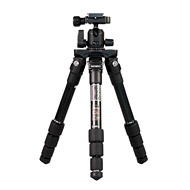 | Benro A1182 Travel Flat Mini Pros: Excellent portability, construction and finish strong, remarkable span, pin interchangeable system of leg adjustment fast and easy Cons: Maximum height necessarily limited mounting system of the camera is not practical, the price a little 'high Opinion: I purchased this to my Manfrotto tripod to support him "normal" by 160 cm, and despite having used a few times (it's a tripod "travel") I have to say I did a great investimento.rnIl its value is essentially to be easily transportable . This thanks to the very low weight and, especially, to its very small dimensions when closed. More than the length of 38 cm, surprising the other two dimensions: the width of about 11 cm and a depth of 5, which becomes 4 if you remove the plate for the camera. This allows you to slip it practically everywhere, even in a common non-specialist backpack (and even in some bag lady, wanting ...). RnBenro achieved this by aligning the three legs on a plate instead of straight triangular or round as usual. The downside is that it lacks the central column and the head is attached directly to the above plate, which limits inevitably the tripod height to 78 cm. For some it may be a limit, but given the other characterstics, there sta.rnMi liked the ease of adjustment of the legs. It can be lengthened or shortened by turning the collars at the top of each section, and once locked remain very stable. The legs can also be open in three different positions (one of which allows you to have the camera a few inches from the ground) by means of the "blocks" in extracting as much genius as simple. I took some pictures by mounting a camera with tele-zoom, flash and shutter release cable (about 2.5 kg in all) that moved without a millimetro.rnPer Incidentally, the flow rate of up to 6 kg in my opinion places him among the tripods for cameras large, even if the undersigned never ever be able to afford so much heavy equipment to check it out for yourself ... rnNella package, in addition to a cloth bag for transport, are also included metal feet to tip, useful for rough ground or uneven walls, on which even the normal rubber feet will slide or not to grip. Simply replace unscrewing. In the box there is a small wrench, but it is for bolts in the legs and should not begood for the legs, so be careful not to overtighten those to tip, because you might not be able to unscrew them without a key a little 'more perplexing grande.rnLascia system instead of fixing the camera. The screw on does not have a ring to grip to rotate but need an Allen key, which fortunately is in the package. This makes it a bit 'hard-working thing, so I would recommend leaving the plate screwed to the camera for the duration of the trip or session. In addition to avoiding continuous use of Allen, allows to reduce the clutter of an additional cm in depth treppiede.rnDetto of the ball head is very fluid, but by securing stable once locked, you can appreciate the presence of two spirit levels, on a mounting plate and a leg on testa.rnInfine the price, about 150 €. It is not really popular, but I think that its features may be worth the expense. If you travel often or you are fond of trekking, weight and small footprint of this tripod can make a difference sent on August 13, 2014 |
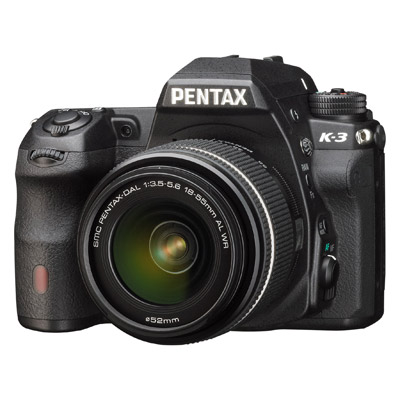 | Pentax K-3 Pros: Excellent resolution, sharpness (no AA filter) excellent, filters and effects when shooting in RAW, much improved autofocus, bright viewfinder, effective stabilizer on the sensor, tropicalization "total", accepts all the targets with the historic attack "K" for Pentax Cons: Price quite high, complicated controls for those coming from K-5, a little 'electronic noise beyond ISO 6400, monitor does not swivel, the package does not include the USB 3.0 cable Opinion: I've had it a little but I have to say that compared to the K-5, the jump is increased by 50% notevole.rnLa resolution produces razor-sharp images and clean, especially if you have the foresight to leave off the mortgage of the anti-aliasing filter. In contrast, the highest density of sensor produces a bit 'of electronic noise, which shows up around 6400 ISO 12800 JPEG and RAW, even if it is non-invasive. In these cases it is better not to print over the size A4.rnLe possibility of personalized features are endless, but for those like myself comes from K-5 the various commands can be confusing, because some are arranged in a completely different way (reminiscent of a bit 'as the K20D). But once done by hand, we realize that they are very rational. Personally it took me a little 'time to get used to the logic of the autofocus settings (single / continuous amplitude and area of ??focus). You have to juggle a small button next to the barrel and rings front and rear, and the first few times it is easy to get confused. RNE about autofocus, is much more efficient. Even focusing a zoom 50-135 mm f / 2.8 SDM, although in itself it is not a chip, it is faster. It improves a little 'updating the firmware to version 1.03, available now. Good also the ability to "follow" a fast-moving subject, although of course there are far more specialized cameras. However, I was able to take good car in the race even if it passed behind some light poles, which is impossible with the K-5. The only problem is that the autofocus points are concentrated in the central part of the sensor, then with the subjects that need to focuse on the edge of the frame and reassemble. Defect, this also detected on the super-flagship professional Canon and Nikon ... RNLA tropicalization is bombproof. I used it for a whole morning in the pouring rain and did not bat an eyelid, you just have to be careful with the rubber flap that protects the connections, it is a bit 'hard to close butOnce the sealing is done completa.rnPeccato that Pentax has lost the opportunity to equip its flagship monitor swivel, tilt, or at least, as some competitors. Aside from this, however, is very sharp, and for me is very useful indication of magnification to 100% of the picture being revised. Bright also mirino.rnInfine, as mentioned, despite having a USB 3.0 connection, in the box there is the related cable and you have to buy it separately (and it is not easy to find). In addition, the program that is in the CD attached to the camera (Digital Camera Utility 5) should be systematically crashes when you try to download the photos by connecting to the PC. Two Pentax negligence that could spare a little 'more attention to detail ... sent on January 15, 2014 |
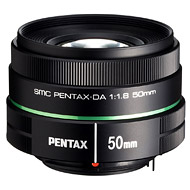 | Pentax SMC DA 50mm f/1.8 Pros: great sharpness, accurate focusing Cons: rather expensive compared to the competition, autofocus noisy, lacks the AF / MF switch on the lens barrel Opinion: I have this lens recently, but so far I can only name a bene.rnGrazie to its simplicity is very sharp even wide open, and vignetting is barely visible, but it disappears already at f / 2,8. In my case, using a K-5, I had to work with great attention to fine-tuning autofocus because it showed some back-focus, but once it's done me no more problems since. To detect the noise a bit 'annoying autofocus, which is not recommended for use on stage and in the environments silenziosi.rnLo I exploit very well in night photography, focheggiando manual with the live-view, and I must say that the lack of the switch on the barrel is an inconvenience because it forces you to use the lever on the body macchina.rnInfine the price rather high compared to several competitors, who more often than not also cost € 50 less, or at a similar price offer an aperture of f / 1,4. sent on December 03, 2013 |
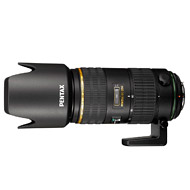 | Pentax SMC DA* 60-250mm f/4.0 ED (IF) SDM Pros: great sharpness, tropicalized, satisfying autofocus Cons: a little expensive, high weight, becomes very long at the maximum focal, diffraction to closed diaphragms Opinion: I have been using this for a couple of years now and it satisfies me in many ways. It also has excellent f/4 sharpness, losing something at the edges only at the maximum focal and full opening, although to notice it you have to zoom in on the photo 100% on the PC monitor. On the other hand, the most closed diaphragms (over f/11) diffraction causes a noticeable drop in sharpness, so if you need longer shooting times it is better to use an ND filter. Autofocus is quite quick even in action photos, although "specialist" lenses are something else. In addition, tropicalization is something that very few others have. It is a real tank; I used it several times in the pouring rain and under the snow and did not make a crease, it was enough to dry it well once back indoors. It's quite heavy and carrying it for hours is no joke. The handling is also what it is, thanks to the fact that it stretches a lot zooming to the maximum focal, so at least one monopod is strongly recommended. In this case it helps the removable bracket included in the price. And by the way, the price is challenging, but the quality you pay. sent on December 03, 2013 |
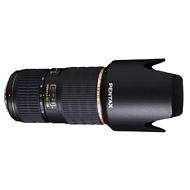 | Pentax SMC DA* 50-135mm f/2.8 ED (IF) SDM Pros: Superb sharpness, accurate focus even in low light Cons: Autofocus is not fast, a little 'heavy Opinion: I have used this perspective in the most varied occasions and I have never been disappointed. I've done portraits, landscape, night, even auto racing, and has never pulled indietro.rnCerto autofocus is not really a chip, but it is a lens that is born for action photography and in these cases some hesitation it has, but gets along well anyway. However, it is in portrait and landscape photos that gives the best, with excellent sharpness even at full aperture (has its "top" around f/5.6) and vignetting almost unnoticeable. Keep in mind that it is very light and portaselo neck all day is not a passeggiata.rnNon cheap, but I did not put the price of the "cons" because it is worth every euro it costs. sent on December 03, 2013 |
 JuzaPhoto contains affiliate links from Amazon and Ebay and JuzaPhoto earn a commission in case of purchase through affiliate links.
JuzaPhoto contains affiliate links from Amazon and Ebay and JuzaPhoto earn a commission in case of purchase through affiliate links.May Beauty Be Everywhere Around Me